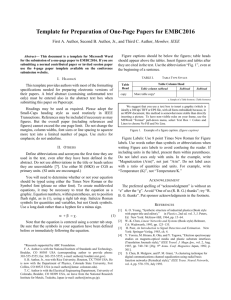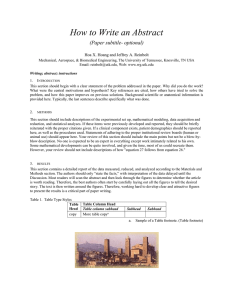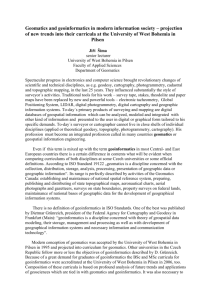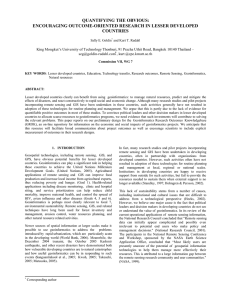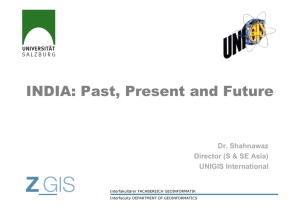GeoInformatics 2013 Extended Abstract Template
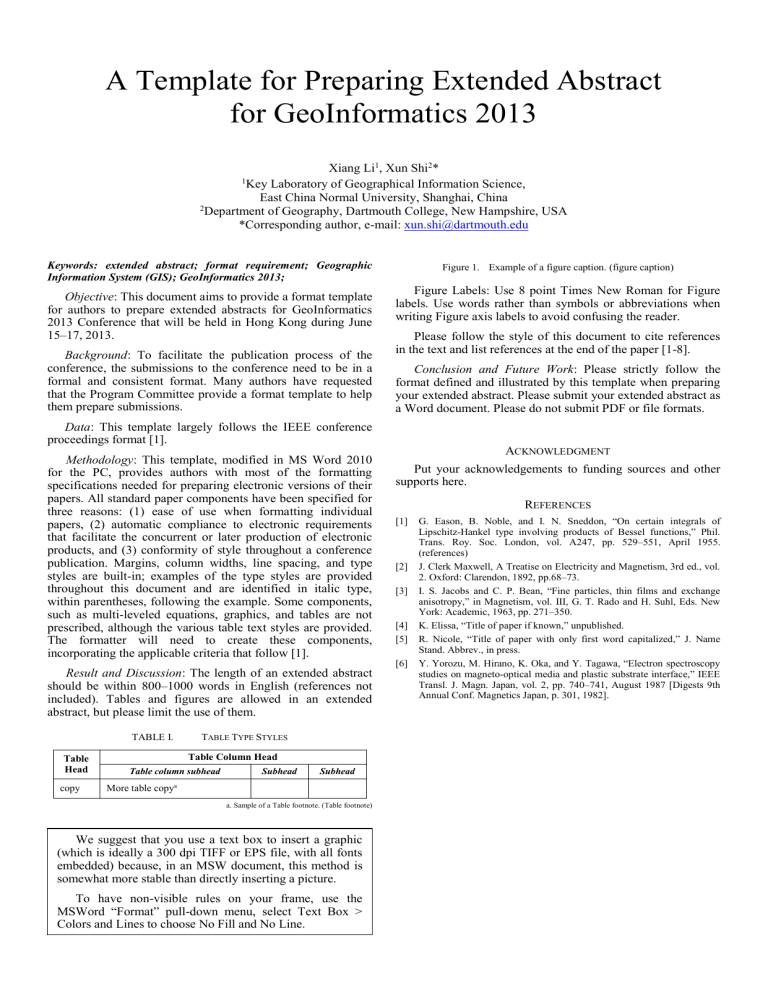
A Template for Preparing Extended Abstract for GeoInformatics 2013
Xiang Li 1 , Xun Shi 2 *
1 Key Laboratory of Geographical Information Science,
East China Normal University, Shanghai, China
2 Department of Geography, Dartmouth College, New Hampshire, USA
*Corresponding author, e-mail: xun.shi@dartmouth.edu
Keywords: extended abstract; format requirement; Geographic
Information System (GIS); GeoInformatics 2013;
Figure 1. Example of a figure caption. (figure caption)
Objective : This document aims to provide a format template for authors to prepare extended abstracts for GeoInformatics
2013 Conference that will be held in Hong Kong during June
15–17, 2013.
Figure Labels: Use 8 point Times New Roman for Figure labels. Use words rather than symbols or abbreviations when writing Figure axis labels to avoid confusing the reader.
Please follow the style of this document to cite references in the text and list references at the end of the paper [1-8].
Background : To facilitate the publication process of the conference, the submissions to the conference need to be in a formal and consistent format. Many authors have requested that the Program Committee provide a format template to help them prepare submissions.
Conclusion and Future Work : Please strictly follow the format defined and illustrated by this template when preparing your extended abstract. Please submit your extended abstract as a Word document. Please do not submit PDF or file formats.
Data : This template largely follows the IEEE conference proceedings format [1].
A CKNOWLEDGMENT
Put your acknowledgements to funding sources and other supports here.
Methodology : This template, modified in MS Word 2010 for the PC, provides authors with most of the formatting specifications needed for preparing electronic versions of their papers. All standard paper components have been specified for three reasons: (1) ease of use when formatting individual papers, (2) automatic compliance to electronic requirements that facilitate the concurrent or later production of electronic products, and (3) conformity of style throughout a conference publication. Margins, column widths, line spacing, and type styles are built-in; examples of the type styles are provided throughout this document and are identified in italic type, within parentheses, following the example. Some components, such as multi-leveled equations, graphics, and tables are not prescribed, although the various table text styles are provided.
The formatter will need to create these components, incorporating the applicable criteria that follow [1].
Result and Discussion : The length of an extended abstract should be within 800–1000 words in English (references not included). Tables and figures are allowed in an extended abstract, but please limit the use of them.
R EFERENCES
[1] G. Eason, B. Noble, and I. N. Sneddon, “On certain integrals of
Lipschitz-Hankel type involving products of Bessel functions,” Phil.
Trans. Roy. Soc. London, vol. A247, pp. 529–551, April 1955.
(references)
[2] J. Clerk Maxwell, A Treatise on Electricity and Magnetism, 3rd ed., vol.
2. Oxford: Clarendon, 1892, pp.68–73.
[3]
I. S. Jacobs and C. P. Bean, “Fine particles, thin films and exchange anisotropy,” in Magnetism, vol. III, G. T. Rado and H. Suhl, Eds. New
York: Academic, 1963, pp. 271–350.
[4]
K. Elissa, “Title of paper if known,” unpublished.
[5] R. Nicole, “Title of paper with only first word capitalized,” J. Name
Stand. Abbrev., in press.
[6]
Y. Yorozu, M. Hirano, K. Oka, and Y. Tagawa, “Electron spectroscopy studies on magneto-optical media and plastic substrate interface,” IEEE
Transl. J. Magn. Japan, vol. 2, pp. 740–741, August 1987 [Digests 9th
Annual Conf. Magnetics Japan, p. 301, 1982].
Table
Head copy
TABLE I. T ABLE T YPE S TYLES
Table Column Head
Table column subhead Subhead
More table copy a
Subhead a. Sample of a Table footnote. (Table footnote)
We suggest that you use a text box to insert a graphic
(which is ideally a 300 dpi TIFF or EPS file, with all fonts embedded) because, in an MSW document, this method is somewhat more stable than directly inserting a picture.
To have non-visible rules on your frame, use the
MSWord “Format” pull-down menu, select Text Box >
Colors and Lines to choose No Fill and No Line.
